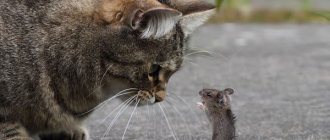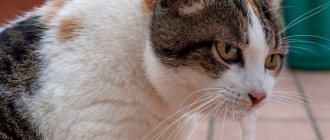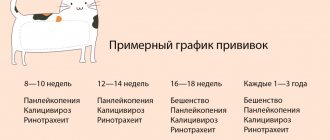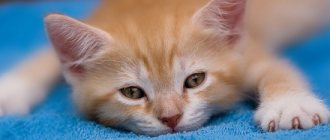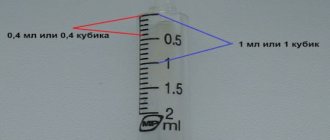The cat ate a poisoned mouse
The cat ate a poisoned mouse, what should I do? All cat owners should know the answer to this question in order to save their pet from the consequences. It may sound strange, but it is rats and mice that pose a serious danger. The fact is that a mouse that has eaten a chemical added by a person becomes poison itself. We will talk in detail about how to help a pet that has been poisoned by rat poison.
How can a cat get poisoned?
Almost all poisons used to kill rodents are zoocoumarins. These drugs reduce blood clotting and provoke various types of bleeding. Typically, the poison must be taken regularly for it to be effective. If a cat eats a poisoned mouse or rat once, then nothing threatens its health, but if eating rodents occurs repeatedly, then poisoning is possible. In addition, your pet can become poisoned if it periodically eats rat and mouse bait.
How to protect your pet
There is no recipe for how to prevent such a situation. And even the owners don’t know whether their cats eat mice or just play with them, and who and when will poison the rodents. It is difficult to keep track of a pet when living in a private house, because in this case cats often walk in the yard and can enter neighboring areas.
You just need to be attentive to your pet and not leave dangerous substances in its reach. It’s also worth asking your neighbors to notify you when they poison mice on their property.
Many owners are concerned about the question: if a cat ate a fly, what consequences could there be for his health. There is no need to worry in this situation. The process itself may simply be unpleasant for the owner’s eyes, but the fly will not harm the cat’s health and will not even cause infection with worms, since it will be processed by gastric juice.
Symptoms of poisoning
Having swallowed a toxic substance, a cat may not immediately show signs of poisoning. It all depends on the specific poison and the method of its entry. The poison can enter the body through a poisoned mouse or rat, or by directly eating it. In the first case, the symptoms will not begin to appear so soon; time must pass before the cat poisons the poisoned mouse. But in both cases there are common symptoms that will show that something is wrong with your animal and he needs help. Signs of poisoning include :
- hematomas;
- seizures and convulsions;
- vomiting and diarrhea, sometimes with blood;
- tachycardia and shortness of breath;
- apathy and refusal to eat;
- fear of people;
- other.
The presence of at least one of these points indicates problems with the cat, and the need to contact a veterinary hospital.
Satisfying the hunting instinct
Even the cutest and fluffiest kitten once played the role of a hunter and predator in nature. After people domesticated cats and began using them as pets, they no longer needed to hunt for food. However, instinct periodically takes over and requires its manifestation in domesticated conditions.
Even if a cat’s body does not lack any elements to maintain health, hunting for mice is its natural need, a reflex that cannot be restrained. Catching mice is not just the job of barn cats. Many purebred kittens living in greenhouse conditions, once they see a mouse, will definitely chase it. But whether they eat their prey for lunch or not depends on whether they are tormented by hunger.
Symptoms
As we have already said, the standard dose of poison is too small for signs of poisoning to appear immediately: this takes at least three to five days. However, the possibility of a cat repeatedly eating poisoned mice cannot be ruled out. In this case, the poison accumulates (even if the doses were very small). If a cat eats a richer rodent, signs of poisoning will likely appear very quickly.
General symptoms of rat poisoning in cats in this case directly indicate problems with the blood clotting process and the presence of internal bleeding. This includes lethargy and an apathetic state, the animal is indifferent to everything that happens to it, tries to hide in the farthest corner, there is a cough and difficulty breathing (due to pulmonary hemorrhage or hemothorax). Also, in severe cases, the abdomen becomes noticeably swollen, which directly indicates generalized internal bleeding. If you do not immediately help the cat at this moment, he will die.
Feeding rules
If there is a suspicion that a small predator may have been poisoned, nothing should be administered except for liquid and some sorbents. However, on the second day, when the pet’s condition has improved significantly, you can start feeding the pet.
But you should stick to a healthy diet, which consists of the following:
- boiled beef fillet, lean meat or chicken;
- boiled liver
- fish of different varieties, low-fat;
- boiled carrots, beets, cabbage and other vegetables;
- porridge, rice and buckwheat.
After cooking, fish and meat should be cut with a blender or passed through a meat grinder. The pet's body is weakened, the stomach will be able to effectively digest and absorb crushed and soft food.
You can mix meat puree with fish to make cat food more nutritious and rich in various minerals.
Remember, the main thing is to react quickly to the first symptoms of poisoning in an animal, follow the above recommendations and act carefully.
First aid
If you observe any signs of intoxication in an animal, you must urgently take it to a veterinary clinic or call a doctor at home.
At the same time, if calling for help is difficult (for example, the locality is located far from a veterinary clinic), the owner must help the pet right at home.
What to do before the doctor arrives:
- If a poisoned mouse or poison for mice and rats was eaten by a cat right in front of the owner, it is worth inducing vomiting using a solution of hydrogen peroxide diluted in a ratio of 1 to 1 (one teaspoon diluted per 1 kg of body weight). You can also induce vomiting in an animal by placing a pinch of soda on the tongue. If the duration of the poisoning has not been established, it is not recommended to induce vomiting: this will only cause dehydration of the exhausted body;
- To bind a toxic substance in the stomach, the cat must be given an adsorbent: enterosgel, activated carbon, polysorb. The drug is diluted in 100 ml of water at room temperature and poured into the mouth using a syringe. Adsorbents are not used if the cat does not stop vomiting;
- To cleanse the intestines, the animal is given an enema of 30 ml of warm boiled water or saline solution.
After poisoning with zinc phosphide, you need to rinse the cat's stomach with a 0.5% solution of copper sulfate or a weak solution of soda.
Unhealthy food
Cat owners, especially people living in private properties and houses, rejoice when their pets start hunting for mice - pests of the household, and do not find anything wrong with the fact that the hunter decided to feast on his trophy. On the one hand, eating mice is natural for cats, on the other hand, such a lunch or dinner can turn into a huge problem for the animal, and often for the owner himself.
Rodents, including mice, are carriers of dangerous diseases that can infect a pet and even transfer them to humans through close contact. After eating a mouse, a cat can become infected with the following infections:
Rabies is a very serious disease that can be fatal if not treated promptly. The danger of this disease is that in the initial stages it does not manifest itself in any way, and at this moment the pet, even during play, can accidentally bite the owner, infecting him in the process. If a domestic cat often hunts mice, the likelihood that he will get rabies is extremely high, which means that such a pet poses a threat to all family members. You can protect animals and people from rabies infection by regularly vaccinating them.
Trichinosis is caused by parasites - nematodes, which can live in the body of a mouse, and when a cat eats its meat, it can be transferred to it. The disease often affects cats that hunt rodents and eat their raw meat. The disease is characterized by damage to muscle fibers. The disease is very difficult to cure; there is no chance of a person becoming infected through contact with a sick animal.
Toxoplasmosis is a disease quite common among felines that occurs as a result of eating raw mouse meat. The owner can also become infected from the pet. The peculiarity of the disease is that with primary infection it immediately becomes chronic, but without a symptomatic picture. Complications due to toxoplasmosis can only occur in people with immunodeficiency conditions. Toxoplasmosis is especially dangerous for women during pregnancy. The infection leads to the development of defects and anomalies in the fetus that are incompatible with life
If there is a woman in the family who is expecting a child, it is important to ensure that the indoor cat does not come into contact with street rodents.
Tularemia is a disease transmitted by mice. A cat who eats their meat and a person who comes into contact with an infected member of the cat world can become infected.
Salmonellosis is an intestinal infection with an acute course and severe symptoms
The owner can become infected with it from an infected pet who has eaten a mouse infected with salmonella.
Leptospirosis – cats get this infection from rodents. The disease manifests itself as acute fever.
In addition to the dangerous diseases listed above, a cat can become infected with helminths, lichen and other unpleasant infections from a rodent, which, although treatable, can significantly worsen the pet’s health.
According to numerous reviews from cat owners living in dacha conditions, their pets hunt mice for years, eat their meat and do not get sick at all. Perhaps the fact is that yard cats have a stronger immune system and are naturally adapted to hunting mice. They are less likely to catch an infection from rodents than representatives of various breeds with weaker immunity, slightly impaired due to many years of selective breeding.
There is another danger for cats that hunt and then eat mice. This is a rodent poison. In private homes, people often use various toxic chemicals designed to kill rodents. If a mouse ate poison, and after some time it became a victim of a cat, the toxic substances will penetrate along with the mouse meat into the animal’s body and cause severe intoxication. If there was a lot of poison or it was potent, the possibility of death cannot be ruled out.
How to help an animal if it is poisoned
If a cat has eaten a poisoned mouse, in case of mild intoxication with unexpressed symptoms, it is enough to give the pet a pharmaceutical sorbent, for example, dissolve activated charcoal in water and pour it into the cat’s mouth.
If the intoxication is severe, symptoms such as frequent vomiting, profuse diarrhea, in which blood streaks are present in the stool, and signs of impaired liver or kidney function, cannot be helped on your own. In this case, it is recommended to urgently call a veterinarian or take the cat to a veterinary clinic as quickly as possible.
Treatment of drug intoxication
The basis of treatment is drug withdrawal. Neurological symptoms are of great importance in diagnosing the condition. The drug and its breakdown products are eliminated through all excretory organs: intestines, kidneys, saliva, sweat glands. The main routes of elimination are the kidneys and liver. Toxins are eliminated from the kidneys quickly enough and are eliminated in the urine. The situation is more complicated with drugs that are eliminated through the gastrointestinal tract.
From the liver cells, the breakdown products of the drug enter the bile and end up with it in the intestines, where they can be reabsorbed and delivered to the liver. This process is called enterohepatic circulation of substances. In some cases, harmful substances are excreted from the intestines along with feces. Circulation can result in toxins remaining in the body for quite a long time. This creates a high load on the liver, provokes the activity of liver enzymes and unpleasant symptoms.
But the entry of drugs and their breakdown products into the stomach, as well as their further movement through the intestines, does not pass without a trace. Peristalsis is disrupted, mucous membranes are irritated, and an imbalance of bacteria occurs. For example, many antibiotics have a detrimental effect on the intestinal microflora. Frequent, prolonged use or an inadequate dose can lead to intoxication. You can speed up their removal with the help of sorbents.
It is important to understand that many mild symptoms of intoxication are an attempt by the body to independently remove excess substances. There is no need to interfere with these processes if they proceed in moderation. It is best to provide conditions under which natural cleansing will occur. For example, with moderate vomiting, you should not resort to the use of antiemetic drugs. You should sound the alarm if your temperature rises above 38.5 °C, uncontrollable vomiting that interferes with fluid intake, signs of dehydration and frequent diarrhea.
Treatment of drug poisoning is carried out using several methods:
- gastric and intestinal lavage (according to indications);
- intravenous infusions to accelerate the elimination of toxins, replenish lost fluid due to diarrhea and vomiting. This technique is appropriate for acute forms of intoxication, in a hospital setting;
- prescribing enterosorbents for internal use to bind and remove toxic substances;
- use of enzyme preparations and diuretics according to indications;
- the use of probiotics and prebiotics to restore normal intestinal microflora;
- vitamin therapy and antioxidant treatment to neutralize free radicals.
For chronic intoxications, outpatient treatment is allowed. But it is important to consult a physician to find out the exact cause of poisoning, adjust the dosage of regularly used medications, or choose an alternative.
In the future, you can cope with the elimination of toxic substances with the help of plenty of drinking, a gentle diet, and enterosorbents. One of the effective drugs to combat intoxication is Fitomucil Sorbent Forte. The product contains a plant sorbent, inulin - a prebiotic that promotes the growth of its own beneficial microflora, as well as live bacteria. The drug accelerates the elimination of harmful substances and improves motility of the gastrointestinal tract. It has a gentle effect on the gastrointestinal tract and does not cause bloating or abdominal pain.
Therapy
The first aid immediately after a cat swallows poison is the administration of drugs that induce vomiting, or the administration of large quantities of activated charcoal, followed by gastric lavage. Alas, in almost all cases when internal bleeding has already developed, it is necessary to transfuse the animal with blood or blood-substituting compounds, plasma. Considering that most domestic veterinary clinics do not have such capabilities, it is advisable not to let things get to this point.
A natural antidote to such poisons is vitamin K. Immediately after the start of treatment, it is administered by injection, and when the animal’s condition stabilizes, they switch to prescribing tablets. At first, the vitamin is administered in loading doses, since under the influence of the poison most of it will still be destroyed in the body. Please note that it is best to use Vikasol for treatment, since multivitamin preparations contain too small amounts of it.
It should be remembered that there are different options for anticoagulant compounds, each of which remains in the animal’s body for a different time. This can make it very difficult to determine when it is time to end treatment. As a rule, they do this: stop prescribing the drug, and then (two days later) take a blood test. Platelet levels are checked. If the poison remains in the animal’s body, their level will be noticeably reduced, and therefore therapy is continued. If all indicators are normal, the medication can be stopped completely.
Features of poisons and symptoms of poisoning
In the event that a cat has eaten a mouse that has already been poisoned, the process of poisoning will most likely be observed in the pet.
If a cat eats a poisoned mouse, it may become poisoned.
All poisons that are intended for mice have a special property - to stop the process of blood clotting. As a result of the interaction of the poison, the blood loses its ability to clot, and the mouse dies from bleeding. Cats experience the same negative changes.
It is important to remember : symptoms of poisoning appear within a period of 1 to 5 days from the moment the poison enters the body. The presence of a problem can be determined by the symptoms characteristic of poisoning.
Mechanism of action of poisoned baits
Mice and rats are social animals. If a person eats something and dies, the message spreads throughout the herd and the rodents do not touch the poisoned bait. Therefore, modern drugs act gradually. The mouse does not die after 7-10 days. The rest of the flock, unsuspectingly, eats the food discovered by the researcher.
The active ingredient of all deratization preparations is the anticoagulant coumarin.
The blood loses its ability to clot, plasma comes out of the vessels, and the mouse begins to peel. The slightest scratch bleeds heavily. The symptoms of the disease resemble the hereditary human disease hemophilia.
It takes a week or more from consuming the poison to death, so most rodents eat the bait and die.
They crawl out of their holes in search of water and become easy prey for cats. The problem is that carnivores are more sensitive than rodents to the effects of blood thinners.
Some felinologists mistakenly believe that poisoning occurs when one cat eats several mice. In fact, sometimes eating a rodent can kill a cat.
Diagnostics and veterinary care
Based on the results of the examination, treatment is prescribed.
The process of identification and diagnosis is carried out by taking tests and examining the external condition of the animal; you will also need to do an ultrasound to determine whether there is damage to the internal organs.
Based on the results of the identification and examination, treatment and preventive measures are prescribed to strengthen the body. In the event that a cat has been poisoned by a poison that the owner used to get rid of rodents on his own, then during the visit it is necessary to provide the veterinarian with a container of poison - this will help to minimize the time for diagnosis and prescribing a course of treatment.
It is important to remember that even a quick reaction from the owner and initiation of therapy does not guarantee the cat’s survival. However, quick, immediate action increases the chances of a positive outcome. And also, except for adsorbents, no medications intended for humans should be given to a cat.
Inducing vomiting
Emetic root syrup will help induce vomiting in a cat.
One effective treatment is inducing vomiting . Emetic root syrup in an amount of 3–4 ml will help with this. Also, as an option, if there is no vomiting root, you can give the cat regular warm boiled water to drink, then make the movement characteristic of inducing vomiting - forcefully but gently press on the root of the cat’s tongue.
Treatment
It is necessary to give the cat plenty of clean water.
Further treatment involves the use of adsorbents at the rate of 1 tablet = 1 kg of weight. The course of treatment is 7 days.
But you also need to give your cat plenty of clean, regular (not boiled) water. A necessary drug that prevents further bleeding and possible complications is vitamin K1. The course of treatment is 1–3 weeks. It is important to remember that the vitamin should be given only 2 hours after taking the adsorbent. The exact dosage is determined by the veterinarian during administration.
Recovery diet
A poisoned cat requires attention and affection from the owner. A special diet will help her regain her strength, thanks to which she will quickly get back on her feet. So, what kind of diet will a pet weakened by poison need:
- On the first day after providing medical assistance, it is better not to feed the animal at all. It is enough to give him only water.
- Lean meat.
- Liver and fish.
- Boiled vegetables in small portions (carrots, broccoli).
- Rice porrige.
It is important to know that at first the cat may not want to eat at all. There is nothing wrong with this; in no case should the owner annoy the cat by trying to feed him, much less try to do it by force
An appetite will appear, rest assured, but only after the body has fully recovered from the damage caused by the poison.
Signs of food poisoning
Symptoms of poisoning are largely similar, regardless of the cause. They are distinguished by intensity and severity depending on the type of toxic substance, age (poisoning in an adult is easier than in children and the elderly) and the amount eaten. However, signs of an inflammatory process in the walls of the intestines and stomach, as well as manifestations of general intoxication of the body, almost always occur.
Signs of poisoning:
- chills, diarrhea, nausea with vomiting;
- feeling unwell, malaise, weakness;
- bloating, painful cramping sensations;
- rise in temperature (usually small).
Severe poisoning, for example, with botulinum toxin, is accompanied by symptoms of damage to the nervous system:
- dry mouth and difficulty swallowing;
- muscle weakness;
- blurred vision, double vision;
- loss of coordination of movements.
Causes of intoxication
Several years ago, the most popular drugs were those containing high levels of arsenic and strychnine. When deposited on the skin or mucous membranes, they provoked unpleasant consequences. For home use, manufacturers produce rat poison in granules, which prevents accidental inhalation of the powder. The latest generation of rodenticides have a standardized dosage, calculated for the weight of the rodent and does not threaten the health of the user.
Human poisoning by rat poison can occur in several situations:
- intentional use of a dangerous substance for the purpose of committing suicide or crime;
- children's attempts to taste bright granules;
- storing mouse poison with food;
- violation of safety rules when treating premises from rats;
- absorption of toxic substances through the skin during prolonged work with them during the manufacture of bait.
If you follow the instructions, it is almost impossible to get poisoned by a dangerous compound. If you accidentally eat rat poison in a volume of 1-2 granules, the liver will cope with the toxins, be able to process them and excrete them in the urine without any health consequences.
The safest household products are those with a cumulative effect, which are neutralized in minimal quantities. But with chronic hepatitis and weak immunity, the cleansing process may not be effective enough, and severe poisoning occurs.
Consequences of cat poisoning by mouse
Any poison causes severe intoxication of the body and disables all important organs and systems. A particularly toxic substance for animals is rat poison, which is used to control rodents. There may be no consequences of poisoning, but they may be very severe:
- Acute liver damage, which leads to organ enlargement and chronic jaundice.
- Neurological diseases - paralysis of limbs, loss of coordination.
- Changes in the organs of vision - with severe poisoning, a cat may develop optic nerve atrophy and blindness.
- Hearing impairment.
- Disorders of the urinary system - urinary incontinence and chronic inflammation of the bladder.
- Persistent allergic reactions, which are accompanied by hair loss and itching.
- Reproductive dysfunction.
- Comatose state and death.
Care
A cat has been seriously poisoned by a rodent control agent or a kitten is in danger; it is necessary not only to treat it correctly, but also to organize effective rehabilitation. How quickly a cat recovers from poisoning depends largely on its owner.
After visiting the clinic, you must strictly follow the doctor’s instructions and give the necessary medications. You cannot feed your pet, you can only give it water. Water or herbal decoction is recommended. And only after two days you can give a little food from the list of allowed foods . Among them:
- kefir;
- low-fat cottage cheese;
- viscous porridge;
- boiled vegetables.
The main thing is to also consult a veterinarian on the issue of feeding; he will tell you what the first portions should be and what is best to give. In the future, the pet can be fed boiled veal or boiled liver, chicken, lean boiled fish, porridge, and boiled vegetables.
IMPORTANT! If an animal refuses to eat after poisoning, there is no need to force it - in such a situation, in a veterinary clinic they will inject it with glucose and saline solution.
An aversion to food can be caused within three days by poison that has entered the body and affected the digestive organs. A cat that has suffered severe poisoning urgently needs attention and careful care. You just need to imagine the stress her body endured.
There is a list of foods that will need to be excluded from the diet of a recovering pet.
- Even if the cat previously ate premium dry food, it will need to be abandoned, since dry pieces will irritate the stomach lining. And she already suffered a lot of stress because of the poisoning.
- You should not give legumes, confectionery, canned cat food, pasta, or bread.
The rehabilitation period for an animal after taking poison can last up to 3 months; you need to be patient and not leave your pet alone with its problems. It is important to remember that not all cats can survive eating a poisoned mouse, and your pet is very lucky.
Alcohol poisoning
Some substances containing ethyl alcohol and ethanol, when ingested, have a damaging effect on the human central nervous system. As a result of reactions in the body, ethanol is converted into a combination of acetaldehyde and acetic acid. It is these compounds that affect the internal organs and tissues of the body causing poisoning.
Signs of alcohol poisoning
- impaired coordination of movement (uncertain gait, staggering);
- emotional instability;
- redness of the skin (red face);
- gagging and nausea;
- in severe poisoning, loss of motor activity, impaired consciousness and depression of respiratory function
Ignorance of limits, abuse of alcoholic beverages, and simply poisoning sometimes leads to serious consequences. They are characterized by:
- comatose state with complete loss of consciousness
- decreased pain reflexes
- impairment of human visual functions
Symptoms of this condition are:
- constricted pupils or pupils of different sizes, most often this depends on impaired respiratory function
- slow muscle reactions and reflexes
Experts divide the state of alcoholic coma into two stages. The first stage is characterized by weak reactions to pressure on pain points, injections, and strong odors (ammonia vapor). It is expressed in weak retaliatory attempts to defend oneself with one’s hands and brush them off.
The second stage of alcohol poisoning is characterized by an almost complete lack of reaction to pain, while the pupils practically do not react to light at all.
The development of deep coma during poisoning is characterized by a decrease in all physical activity, reflexes and movement, and a decrease in body temperature. The most dangerous thing is the lack of medical care for respiratory dysfunction in this condition. This is the main cause of death from ethanol poisoning.
The most common phenomena in deep alcoholic coma are:
- profuse salivation
- tongue retraction
- hoarse weak breathing
- nausea (especially dangerous if vomit enters the respiratory tract)
- bluish complexion
- decrease in blood pressure
- rapid heartbeat and poor circulation
First aid
The very first action in case of alcohol poisoning is to call an ambulance. If the victim reacts to external influences, he is clearly inhibited in his actions and drowsiness, it is necessary to put a cloth soaked in ammonia under his nose and, if possible, rinse his stomach.
To rinse your stomach, you need to drink a lot of water with the addition of baking soda, at least a liter. Next, you should put two fingers in your mouth to trigger a gag reflex.
During alcohol consumption, the superficial blood vessels of the skin cool, so after gastric lavage, you need to warm the victim.
If you have activated carbon or other adsorbent agent, it would be a good idea to give it to the victim. Take activated carbon at the rate of 1 tablet per 10 kg of weight.
If the victim does not respond to external stimuli and is in a comatose state, it is necessary to turn him on his stomach to avoid vomit from entering the respiratory tract.
Prevention measures
Activated carbon is an effective means of removing toxins from the animal’s body.
Cats are predators, which is why catching and eating rodents is a natural process for them. Poisoning can be prevented once and for all only by completely isolating the pet from the outside world, when the cat lives in a city apartment throughout its life and does not go outside.
But even in this case, a poisoned tiny rodent can enter the home if mass deratization was carried out in a neighboring building or room. Traditionally, in the spring and summer, summer residents take their pets out into the fresh air, where their tailed friends are exposed to danger every day.
Much depends on the vigilance and sensitivity of the owners. If your cat’s behavior alarms you, immediately show it to a specialist and promptly stock up on activated carbon, which is necessary for providing first aid to animals and people. If pest control is being carried out in your area, refrain from letting your cat outside.
Veterinarians discourage cat owners from regularly walking around the city, as it is fraught with many dangers for a small animal. When a pet leaves the home, you need to know what to do if the cat is poisoned by rat poison and be prepared to overcome the consequences of poisoning.
Cats have been known mousecatchers since their domestication. Some individuals are so good at catching rodents that they are able to completely rid both the house and the surrounding area of them. It is not surprising that rat poisoning in cats is one of the main dangers that can await your pet. You need to clearly know the main types and principles of action of the poison, since in this case the chances of saving the cat’s life increase sharply.
